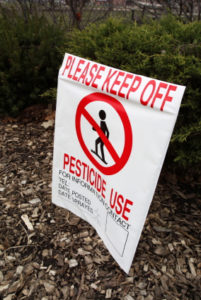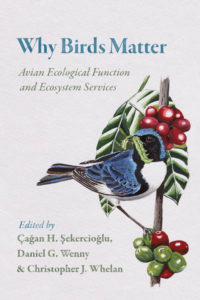Myth, Mindset and Truth
In his June 11, 1962 speech at Yale University, President John Kennedy advised that
“… the great enemy of truth is very often … the myth — persistent, persuasive and unrealistic.” (Widmer, T., Listening In, 2012, pp 300)
JFK’s wise words pertain to three myths we confront here:
 Green Changes by Producers Always Have a Downside
Green Changes by Producers Always Have a Downside
for Consumers
Researchers of industrial sustainability at Cambridge University’s Institute for Manufacturing have been challenged by a troubling public myth: the belief by consumers that green innovations adopted by producers result in goods and services of reduced quality, or higher prices, or both.
This mistaken mindset appears to be so prevalent currently that even when business managers make sustainable innovations, saving resources and costs for their own operations, they are reluctant to publically announce them. Why? They fear negative responses by citizens, so their green changes continue to be “hidden in the shadows…” (Coburn, C., p.31, Sept., 27, 2019, The Guardian Weekly)
We are seriously concerned that the failure to announce such changes deprives the public of knowing about the potential value from green innovation.
Professor Steve Evans of Cambridge University suggests that hidden sustainable changes by producers are widespread.
At Cambridge U. researchers are focusing on ways of altering this misguided public mindset through psychological means.
Examples of producers hidden innovations include: (Coburn, C., p.31, Sept., 27, 2019, The Guardian Weekly)/
Leading manufacturers that are “improving their energy efficiency about five times faster than the average company… feel they cannot boast about their achievements.”
“A well-known car company reduced the energy it used to make its cars by 75% but kept quiet about it.”
RCLA is encouraged by research efforts to help dispel this myth so that verifiable green innovations by producers can be identified, and lead to justifiable consumer pride in sustainable goods and services.
 Chemical Pest Control Products Are Safe If registered with the US Environmental Protection Agency (EPA)
Chemical Pest Control Products Are Safe If registered with the US Environmental Protection Agency (EPA)
 There is a widespread, erroneous belief by members of the public that if a chemical pesticide is registered with the USEPA it is “safe.” In truth, there is a Federal Law specifically prohibiting manufacturers from labeling their pesticide products as: “safe, non-poisonous, non-injurious, harmless or non-toxic”- – when registered by the USEPA, even when accompanied by a qualifying phrase such as “when used as directed.” (40CFR:162.10(a)(5)(ix). Pesticide products are registered under a risk/benefit standard. Companies disregarding this regulation have been prosecuted for declaring their pesticide products “safe.” When such prosecution against the manufacturing industry takes place it is due to action at the state level. For example, New York State brought a successful case against Dow Chemical for calling the organophosphate insecticide, chlorpyrifos “safe” and the company was fined $2 million. “Dow eventually agreed to pay a $2 million penalty… and to discontinue making claims of product safety – but only in New York State.” (Wargo. J., Green Intelligence, 2009, p. 159)
There is a widespread, erroneous belief by members of the public that if a chemical pesticide is registered with the USEPA it is “safe.” In truth, there is a Federal Law specifically prohibiting manufacturers from labeling their pesticide products as: “safe, non-poisonous, non-injurious, harmless or non-toxic”- – when registered by the USEPA, even when accompanied by a qualifying phrase such as “when used as directed.” (40CFR:162.10(a)(5)(ix). Pesticide products are registered under a risk/benefit standard. Companies disregarding this regulation have been prosecuted for declaring their pesticide products “safe.” When such prosecution against the manufacturing industry takes place it is due to action at the state level. For example, New York State brought a successful case against Dow Chemical for calling the organophosphate insecticide, chlorpyrifos “safe” and the company was fined $2 million. “Dow eventually agreed to pay a $2 million penalty… and to discontinue making claims of product safety – but only in New York State.” (Wargo. J., Green Intelligence, 2009, p. 159)
Strengthening these laws could help protect the consumer and further educate the public about pesticides’ hazards.
 Effective Pest Control Always Needs Chemical-Based Products
Effective Pest Control Always Needs Chemical-Based Products
A misperception exists that biological pest control methods cannot have equal or greater effectiveness than EPA-registered chemical pesticides. Rachel Carson’s 1962 book, Silent Spring, chiefly considered the hazards related to use of synthetic chemical pesticides. In Chapter 17, “The Other Road,” however, she described effective alternatives to chemical pesticide use, including deploying specific insects or other organisms that prey on pests to bring about biological control. Rachel Carson stressed, further, that biological control needs to be “carried out with…scientific thoroughness… [since] [t]he predator and the preyed upon exist not alone, but as part of a vast web of life, all of which needs to be taken into account.” (Carson, R., Silent Spring, p. 292-293, 1962) This systematic road map for a sustainable approach reflects Carson’s evidence based training and her research standards.
Biological Pest Control Examples:
Green Innovations Improve Crop Health and Increase Yield
Two Portuguese wineries that switched to organic practices experienced healthier soil, healthier vines, a significantly reduced environmental footprint, and an 18% harvest increase. (Coburn, C., p.31, Sept., 27, 2019, The Guardian Weekly)
A Biological Strategy Controls a Dangerous Pest
The screw worm fly, a very destructive pest of cattle in the southwestern US and Mexico has been eradicated by a biological control method consisting of the release of sterile male flies to mate with the screw worm fly females. This method which was described in the last chapter of Silent Spring is still in use today. Moreover, it is considered one of the most successful control programs employed by our own USDA.
Barn Owls Help Save Migratory Birds from Lethal Chemicals and Increase Farmers’ Harvests
 In the late 1970s, after chemical rodenticides had killed hundreds of migratory birds in northern Israel, an Israeli ornithologist persuaded farmers on one kibbutz to install Barn owl nest boxes so that the resident owls could prey upon and control rats, and use of the chemical rodenticide could be discontinued. A few years later with more owl nesting boxes on the grounds of the original and other kibbutz farms, rat problems had vanished, however, other problems developed. Increasingly owls were flying from the kibbutz to farms across the border in Jordan where rodenticide use remained rampant. Chemical rodenticides were seeping into the water table, and owls were poisoned by eating contaminated rodents. In 2002, after a peace treaty and good neighbor exchanges between Israelis and Jordanians, as well as funding from the Jewish Community Federation of Cleveland, Ohio, the kibbutz gave the Jordanians advice and materials to build Barn owl nest boxes. The efforts of one enthusiastic nest box builder, a retired surgeon, whose date farm was 6 miles from the original kibbutz brought about effective management of pest rodents on his farm. The resident owls preying on the rodents had eliminated the need for chemical rodenticides. This successful demonstration resulted in acceptance by other Jordanian date farmers who previously had been reluctant to use biological controls relying instead on chemical rodenticide applications. When other farmers set up owl nest boxes and switched away from the rodenticides thus eliminating a chemical danger to migratory birds, they reported some of their best harvests ever. (Winograd, Ben, “Barn Owls Unite Israelis, Jordanians,” AP, 7-16-07)
In the late 1970s, after chemical rodenticides had killed hundreds of migratory birds in northern Israel, an Israeli ornithologist persuaded farmers on one kibbutz to install Barn owl nest boxes so that the resident owls could prey upon and control rats, and use of the chemical rodenticide could be discontinued. A few years later with more owl nesting boxes on the grounds of the original and other kibbutz farms, rat problems had vanished, however, other problems developed. Increasingly owls were flying from the kibbutz to farms across the border in Jordan where rodenticide use remained rampant. Chemical rodenticides were seeping into the water table, and owls were poisoned by eating contaminated rodents. In 2002, after a peace treaty and good neighbor exchanges between Israelis and Jordanians, as well as funding from the Jewish Community Federation of Cleveland, Ohio, the kibbutz gave the Jordanians advice and materials to build Barn owl nest boxes. The efforts of one enthusiastic nest box builder, a retired surgeon, whose date farm was 6 miles from the original kibbutz brought about effective management of pest rodents on his farm. The resident owls preying on the rodents had eliminated the need for chemical rodenticides. This successful demonstration resulted in acceptance by other Jordanian date farmers who previously had been reluctant to use biological controls relying instead on chemical rodenticide applications. When other farmers set up owl nest boxes and switched away from the rodenticides thus eliminating a chemical danger to migratory birds, they reported some of their best harvests ever. (Winograd, Ben, “Barn Owls Unite Israelis, Jordanians,” AP, 7-16-07)
Players Enjoy Golfing on an Organic Course
At a golf course on Martha’s Vineyard, MA managed organically, first time players needed to be reminded that no chemical pesticides have been applied to the turf. Why? Golfers finding the greens and fairways to be of a highly playable quality automatically assume that chemical pest control products have been used. They, (along with many other folks) were not familiar with the effectiveness of organic turf management. (Jeffery Carlson)
Meeting the Need for News on Birds’ Ecological Services
Dr. Chris Whelan a speaker at RCLA’s 2018 Open House recounted how when lecturing near Chicago, IL, he had described a Dutch study showing that birds preying on apple-damaging insects had increased the apple yield by 66%. Two farmers in the audience then asked, “Why isn’t this information public?”
 Dr. Whelan realized that, although the study results had been published in a technical journal, they had not been made available to non-scientists, and that there was an unfilled need for scientific data on the valuable services and economic rewards that come from work performed by birds. He understood that the information had to be written without technical jargon, for access by the public. Then, Whelan and 2 colleagues decided to take action and they created Why Birds Matter: Avian Ecological Function and Ecological Services. This important book, published in 2016 describes the benefits birds provide to humans. It includes details that extension services and the news media have generally failed to share with the public. It is authoritative and well-researched – we highly recommend it to readers.
Dr. Whelan realized that, although the study results had been published in a technical journal, they had not been made available to non-scientists, and that there was an unfilled need for scientific data on the valuable services and economic rewards that come from work performed by birds. He understood that the information had to be written without technical jargon, for access by the public. Then, Whelan and 2 colleagues decided to take action and they created Why Birds Matter: Avian Ecological Function and Ecological Services. This important book, published in 2016 describes the benefits birds provide to humans. It includes details that extension services and the news media have generally failed to share with the public. It is authoritative and well-researched – we highly recommend it to readers.
Awareness of Sustainable Practices and Their Rewards
Today’s readers and especially young people can benefit by taking a clear-eyed look at the wealth of verifiable evidence supporting the advantages provided by sustainable goods and services. Unfortunately, producers can fail to reveal sustainable practices through fear of negative, erroneous consumer responses. Awareness by members of the public that green innovations are benefiting the earth as well as their wallets can help end this consumer-based misperception. Such a change can lead to an increase in demand for sustainably produced commodities and a pride of ownership in such green goods. This is urgently needed because the extent to which producers adopt sustainable innovations, (and disclose them to the public) will help determine the future health of our planet.
Similarly, people everywhere deserve to know about the success of sustainable growing practices. More farmers are finding that the planting of cover crops combined with the use of no-till methods can help reduce soil erosion and irrigation runoff. These are important features of what’s known as the regenerative system of agriculture. Farmers report that the improved soil quality accompanying regenerative practices has reduced or eliminated the need for the use of chemical insecticides and herbicides. (Crable, A., “Soil health practices increasingly helping farmers hit pay dirt,” Chesapeake Bay Journal, June 2020)
The beneficial impacts of innovative agricultural changes relying on ecosystem services as replacements for chemical pesticides and fertilizers need to be fully disclosed to consumers, young and old alike.
Dr. John Losey, Entomologist at Cornell University, lectured at RCLA’s 2019 Rachel Carson Open House event about the advantages of using biological controls as sustainable strategies in agriculture. A discussion of his presentation, “Beyond Herbicides and Hubris: Why Butterflies, Birds, Beetles and Babies Need Weeds,” can be accessed from the RCLA web site home page, www.rachelcarsonlandmarkalliance.org, or by Clicking Here.
Concern about these issues is worldwide in scope. Citizens everywhere deserve to know that the United Nations has designated 2021 as the beginning of the Decade on Ecosystem Restoration, “a rallying call for the protection and revival of ecosystems around the world.”(“How green was my desert,” by Steve Rose, The Guardian Weekly 3-26-21)
4-22-21






